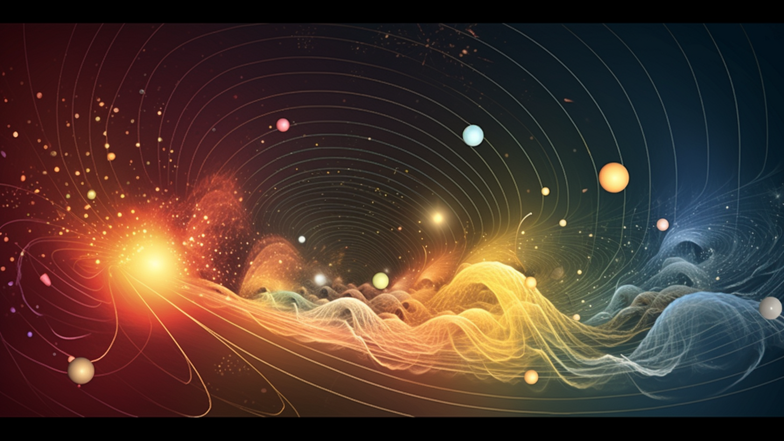
The nature of matter has been mystery for centuries, and even after all the advancements in science, it continues to intrigue and fascinate us. One of the most puzzling concepts that scientists have encountered while trying to understand matter is the wave-particle duality. The wave-particle duality is a phenomenon that describes how particles can exhibit both wave-like and particle-like behavior, and it is a fundamental concept in physics.
This article delves into the history, science, and real-world applications of wave-particle duality, to offer a fascinating glimpse into the nature of the universe and the mysteries that continue to challenge our understanding of physical reality.
History of Wave-Particle Duality
The concept of wave-particle duality dates back to the early 1800s, and it came about as a result of research into the nature of light. Scientists had long recognized that light could travel as waves, but as they explored this phenomenon further, they discovered that light could also behave like a particle.
The concept of wave-particle duality was further developed in the early 1900s, by physicists like Max Planck, Albert Einstein, and Louis de Broglie. Planck proposed that light could exist in discrete packets of energy, which he called quanta (now known as photons). Einstein later confirmed this theory and developed the nature of these quanta to explain the concept of the photoelectric effect (the phenomenon where electrons are emitted from a metal surface when exposed to light).
De Broglie added to the concept of wave-particle duality by suggesting that all particles could exhibit wave-like behavior and that the wavelength of a particle was inversely proportional to its momentum. This theory was later confirmed by experiments that showed that particles could exhibit diffraction patterns (the bending of waves as they pass through an aperture) similar to those of waves.
Science of Wave-Particle Duality
The wave-particle duality is an incredibly complex but fundamental concept in physics. It describes how, in a quantum system, particles have both particle-like and wave-like properties, and the behavior of these particles depends on the observation of the system.
At the atomic level, particles behave according to the laws of quantum mechanics, which can be difficult to understand using classical physics. These laws describe how particles exist in a state of superposition (where they can occupy multiple locations at the same time) until they are observed or measured, at which point they collapse into a single location.
This concept can seem counterintuitive, but it has been confirmed by various experiments, including the famous double-slit experiment. In this experiment, a beam of light is shone through two slits, creating an interference pattern on a screen behind them. When the experiment is repeated with just one slit open, a simple pattern is observed on the screen. These results suggest that light behaves like a wave when it passes through both slits but behaves like a particle when it passes through only one.
Real-world Applications of Wave-Particle Duality
The concept of wave-particle duality might seem purely theoretical, but it has real-world applications. One of the most significant applications is in the field of quantum computing, where particles are used as qubits (quantum bits) instead of classical bits.
In a classical computer, bits are either 0 or 1, but in a quantum computer, particles can exist in a state of superposition, meaning that they can represent multiple states simultaneously. This allows for the processing of vast amounts of data simultaneously, making quantum computing a massively powerful technology that could revolutionize many areas of science and industry.
Wave-particle duality also has applications in the field of microscopy. In traditional microscopy, a beam of light passes through an object and is refracted (bent) or absorbed by the object, creating an image. However, this method is not precise enough to image very small objects like viruses or atoms.
In electron microscopy, particles are used instead of light, and the diffraction patterns they produce are used to create an image. This creates a more precise image of the object and makes it possible to study the structure of atoms, molecules, and even viruses.
Conclusion
Wave-particle duality is a fascinating concept in physics that describes how particles can exhibit both wave-like and particle-like behavior. It is a fundamental principle of quantum mechanics and has been confirmed by experiments, including the famous double-slit experiment.
Despite its complexities, wave-particle duality has real-world applications and could be crucial to the development of technologies like quantum computing. It also allows us to study and understand the smallest particles in our universe and offers a glimpse into the mysteries that continue to challenge our understanding of physical reality.
Comments
Post a Comment